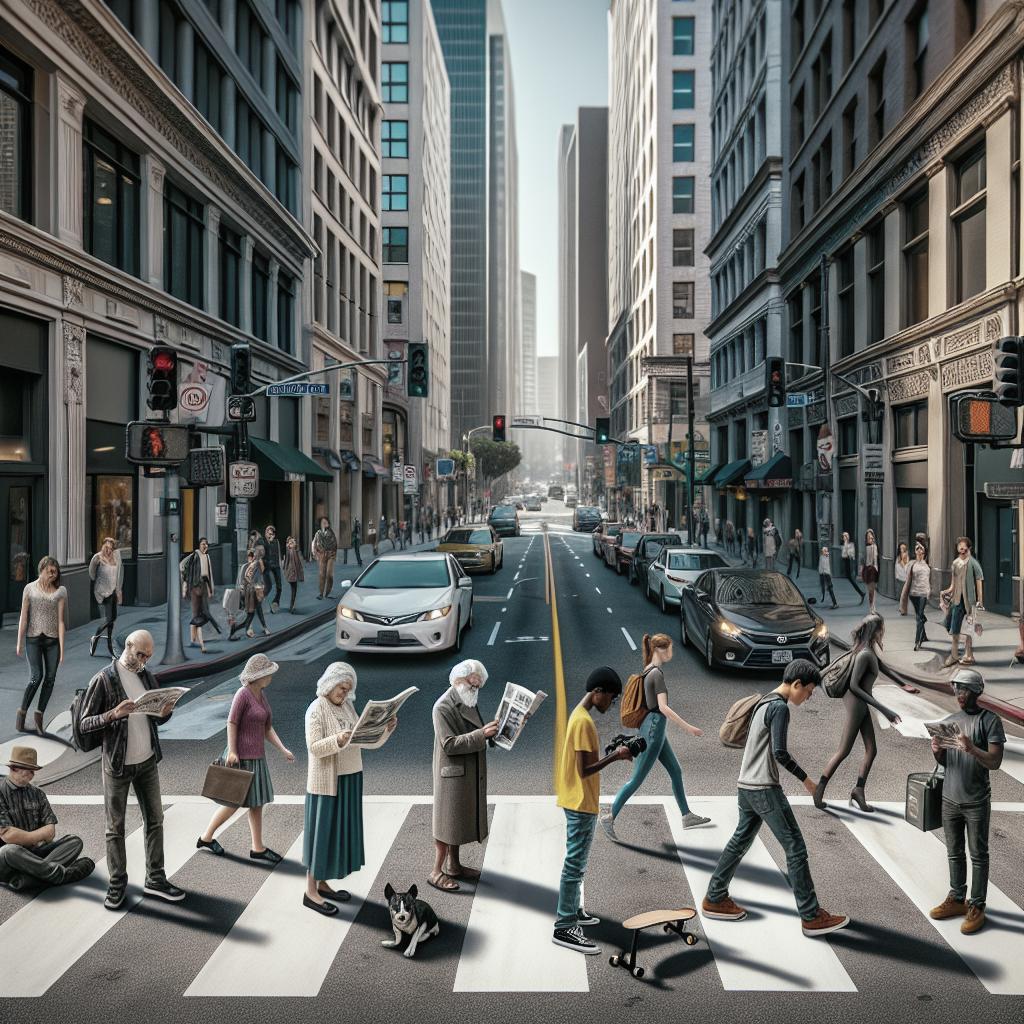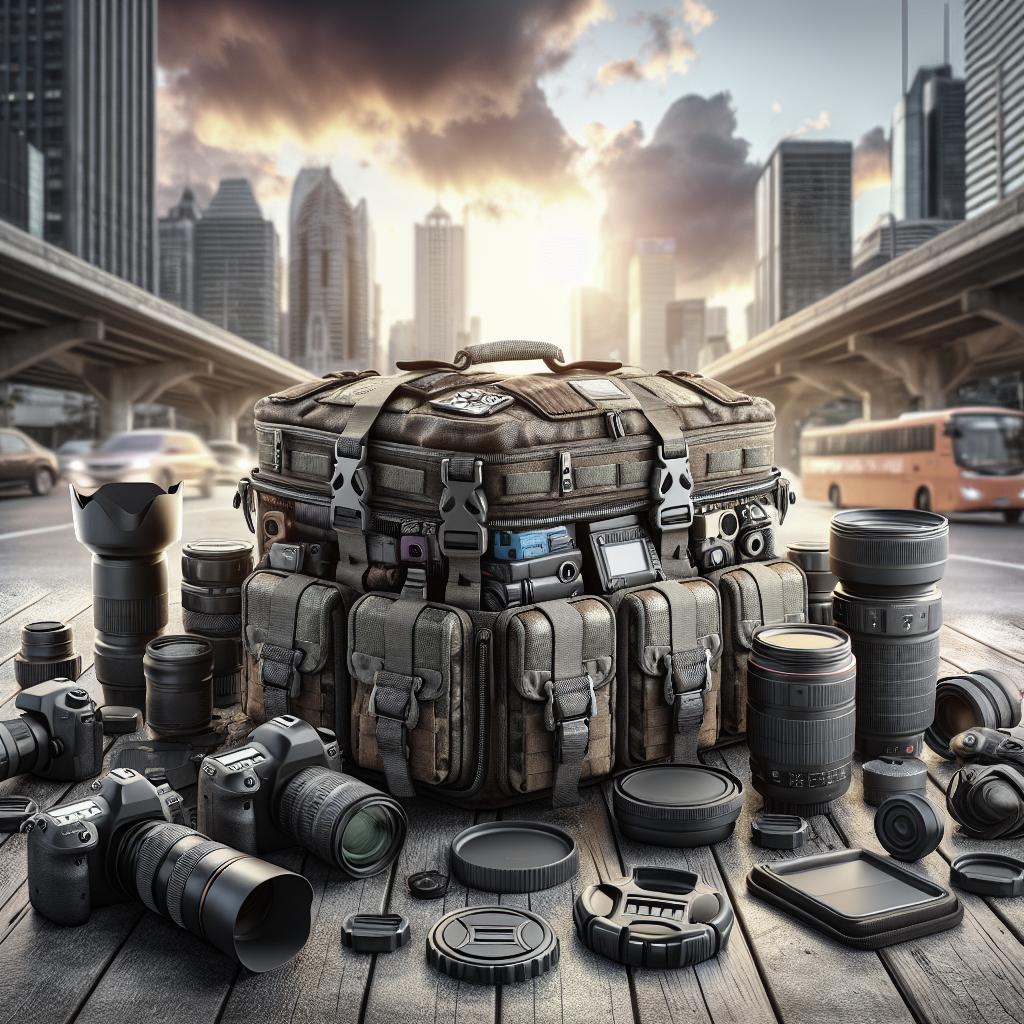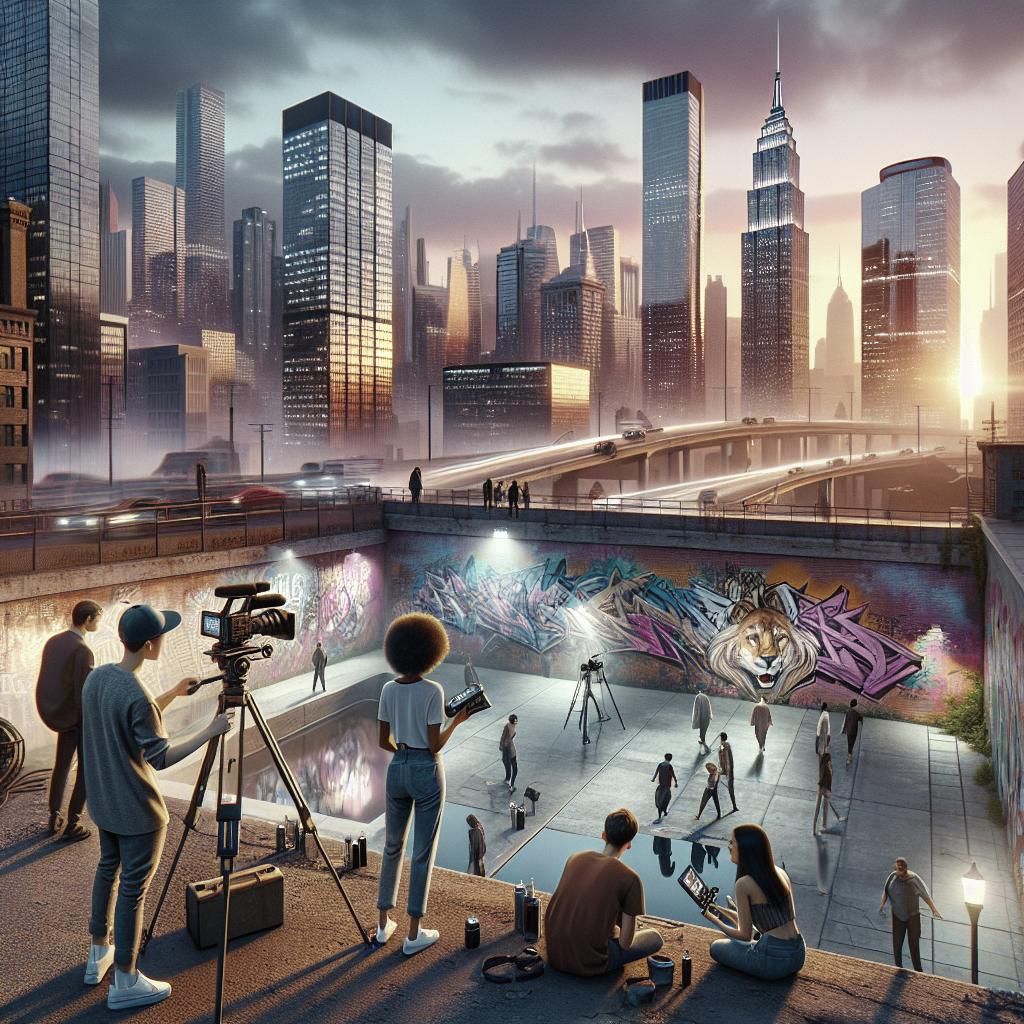<>
“`
Everything you need to know about street photography
Street photography is a vibrant and invigorating genre that captures the essence of urban life. This blog post will provide you with all the essential knowledge and tips to effectively photograph people on the street. We’ll cover what street photography entails, the elements that make a good street photo, and whether all street photography needs to be candid. We will also discuss the right camera equipment to use, essential codes of conduct, and a variety of street photography tips and ideas to help you get started. Wrapping up, we’ll address common FAQs to solidify your understanding of this dynamic art form.
What is Street Photography?
Street photography is a genre of photography that focuses on capturing candid moments in public spaces. It thrives on spontaneity and the raw, unfiltered portrayal of everyday life. Unlike posed or studio photography, street photography is often unpredictable and driven by the chaotic beauty of urban environments. The subject matter can range from individuals and groups to architectural elements and interesting scenes. The essence of street photography lies in its ability to tell a story with a single shot. These images often reflect societal norms, cultures, and unique characteristics of a locality. Whether it’s the bustling streets of New York City or a quiet alley in Kyoto, street photography aims to capture the spirit of the place and the people who inhabit it.
What Makes a Good Street Photograph?
A good street photograph is one that captures a compelling moment or tells a captivating story. While technical aspects like composition, lighting, and framing are important, the emotional impact of the photo often holds more weight. The best street photos evoke emotions—joy, sorrow, curiosity, or nostalgia—in the viewer. Timing plays a crucial role in street photography. Being able to anticipate and capture the ‘decisive moment,’ as coined by Henri Cartier-Bresson, can transform an ordinary scene into an extraordinary one. An excellent street photograph often combines the right setting, moment, and emotions to create a timeless piece.
Do Street Photos Need People?
While people are often the focal point of street photography, they are not a necessity. Street photography can encompass a wide range of subjects, including architecture, urban landscapes, and abstract elements. The key is to capture the essence of the street environment and convey a story through the image. Scenes without people can still be compelling. An empty park bench, a lone lamppost, or a cracked pavement can evoke emotions and tell stories just as powerfully as images filled with activity. Ultimately, the presence of people in your street photos depends on the story you want to tell and the emotions you wish to evoke.
Is All Street Photography Candid?
While street photography often emphasizes candid moments, not all street photos are taken without the subject’s awareness. Some photographers prefer to engage with their subjects, creating a connection that can lead to more poignant images. However, this approach can alter the authenticity of the moment. Candid photography captures subjects in their natural state, unaware of the camera, leading to authentic and spontaneous images. Both candid and posed street photography have their merits, and your approach will depend on your personal style and the story you aim to tell.
Camera Equipment for Street Photography
Choosing the right camera for street photography can significantly impact your experience and the quality of your photos. Compact and mirrorless cameras are popular choices due to their lightweight and discreet nature. DSLRs can also be used, but their bulkiness might make them less practical for quick, spontaneous shots. A versatile lens, such as a 35mm or 50mm prime lens, is ideal for street photography. These lenses provide a natural field of view that closely resembles human vision, allowing for more authentic captures. The choice of gear ultimately depends on your comfort and shooting style.
Code of Conduct
Respect and Smile
When photographing people on the street, respect is paramount. Always approach your subjects with politeness and a genuine smile. This can make them feel more at ease and willing to be photographed. If someone objects to being photographed, respect their wishes and move on without making a scene. Respect also means not invading privacy. Avoid taking photos in sensitive situations unless you’ve explicitly gained permission. Being considerate and mindful will help you maintain ethical standards and build a positive reputation as a street photographer.
Photographing Children
Photographing children on the street can be a sensitive matter. It’s crucial to get permission from a parent or guardian before taking pictures of minors. This not only respects their rights but also protects you from potential legal issues. Always be transparent about your intentions and ensure that parents are comfortable with your presence. Respect children’s privacy by avoiding overly intrusive shots. Focus on capturing candid moments that reflect their innocent and carefree nature without making them feel uncomfortable or threatened.
Photographing the Less Fortunate
Photographing the less fortunate requires a high degree of sensitivity and respect. Always consider the dignity of your subjects, and avoid exploitative or demeaning representations. If you wish to photograph homeless or disadvantaged people, engage with them, and ask for their consent. Contributing to their well-being by offering help or a donation can also be a noble gesture. Remember that your goal is to tell their story with empathy and respect, not to sensationalize their hardships.
Street Photography Tips and Ideas to Get You Started
Know Your Gear and Have the Right Settings
Familiarizing yourself with your camera and its settings is crucial for effective street photography. Quick reflexes are essential, so make sure you can easily adjust shutter speed, aperture, and ISO on the fly. Pre-set your camera to optimal settings for street conditions, usually involving a high shutter speed and a medium aperture. Experiment with different modes, such as aperture priority or manual, to find what works best for you. Always have extra batteries and memory cards on hand to avoid missing out on spontaneous moments.
Shoot from a Distance
Shooting from a distance can help you capture candid moments without intruding on your subjects’ personal space. Telephoto lenses are useful for this approach, allowing you to photograph people unaware from afar. This technique can produce natural shots without making your subjects feel uncomfortable. Using a wide-angle lens from a distance and cropping your images later is another strategy. This way, you can maintain a discreet presence while still capturing detailed and engaging shots.
Take Pictures of Street Musicians (Buskers)
Street musicians often make excellent subjects for street photography. Their performances add a lively and dynamic element to your shots. Approach them respectfully and, if possible, give a small tip to show your appreciation for their art. Capturing the interactions between musicians and their audience can also add depth and narrative to your photos. Focus on the emotions and expressions of both the performers and the spectators to create compelling images.
Shoot From Behind Glass
Photographing from behind glass can add a unique perspective to your street photography. Windows, mirrors, and glass doors provide opportunities for creative compositions and reflections. This technique can help you capture scenes in a more abstract and artistic manner. Using glass as a medium can also act as a natural barrier, allowing you to photograph candid moments without drawing attention to yourself. Experiment with different angles and reflections to add an extra layer of intrigue to your shots.
Photograph the Backs of People
Photographing people from behind can create a sense of mystery and anonymity in your street photos. This technique allows you to focus on body language and movement rather than faces, making the viewer pause and think about the story behind the image. The backs of people can still convey powerful emotions and narratives. A simple act like walking down the street or looking through a shop window offers countless opportunities for compelling shots.
Photograph Street Animals
Street animals can be charming subjects that add a different dynamic to your street photography. Stray dogs, cats, or even birds interacting with the urban environment offer unique storytelling possibilities. These creatures often convey emotions and experiences that are just as intriguing as human subjects. Photographing street animals may require patience and the ability to capture quick movements. Use a fast shutter speed and be prepared to take multiple shots to get the perfect capture.
Set the Stage
Sometimes, setting the stage can lead to incredible street photos. Pay attention to the surroundings and wait for the right moment to capture a subject entering the frame. This pre-planning enables you to achieve a better composition and lighting for your shots. Choosing the right location and anticipating human activity can help you frame your subjects perfectly. This technique can be particularly effective in busy urban settings where interesting things are always happening.
Capture Silhouettes
Silhouettes can add a dramatic flair to your street photography. By photographing against a bright light source—such as the setting sun or streetlights—you can create striking contrasts. Silhouettes simplify the scene by focusing on shapes and forms, making the image more visually appealing. Experiment with different backdrops and light sources to achieve varied silhouette effects. This technique works well in both day and night settings, providing ample opportunities for creative experimentation.
Use Contrasty Light
Contrasty light can enhance the textures and details in your photos, making them more visually striking. High-contrast lighting conditions, such as strong sunlight or artificial streetlights, can add depth and dimension to your images. Play with shadows and highlights to create dramatic effects. Contrasty light can bring out the vivid colors and intricate details in your subjects, making your street photos more engaging.
Wait for the Decisive Moment
The ‘decisive moment’ is a concept popularized by Henri Cartier-Bresson, which refers to capturing the precise moment when the elements in a scene come together to create a perfect composition. Patience and keen observation are key to catching these moments. Pay attention to the surroundings and be ready to take the shot when the right moment occurs. The decisive moment often results in compelling and emotionally resonant images that stand out.
Learn the Right Way to Approach Strangers
Approaching strangers for street photography can be daunting but, when done correctly, can yield rewarding results. Start by making eye contact, smiling, and introducing yourself. Explain your passion for street photography and why you find them interesting subjects. Always be polite and respectful. If someone declines, don’t take it personally. Move on gracefully and look for other opportunities. Building rapport can make your subjects more willing to be photographed, resulting in more engaging images.
Show Gratitude
Showing gratitude to your subjects can go a long way in building positive relationships. Thank them for their time and cooperation. If possible, share the photos with them by giving them a business card or taking their email address. Expressing gratitude not only shows respect but also encourages a sense of goodwill. This approach can lead to more opportunities and collaborations in the future.
Street Photography FAQ
Q: Is it legal to photograph people in public places? A: Generally, it is legal to photograph people in public spaces. However, laws vary by country and region, so it’s important to familiarize yourself with local regulations. Q: What should I do if someone gets upset about being photographed? A: Apologize and offer to delete the photo if it makes them uncomfortable. Respect their wishes and avoid confrontation. Q: Do I need a model release for street photography? A: Model releases are not usually required for editorial use but may be necessary for commercial purposes. Always check the specific requirements based on your intended use.
Next Steps
Related Articles
– The Ultimate Guide to Urban Exploration Photography – Mastering Light and Shadows: Advanced Techniques for Street Photography – Ethical Considerations in Documentary Photography
| Section | Description |
|---|---|
| What is Street Photography? | Discusses the genre and its core principles. |
| What Makes a Good Street Photograph? | Explores elements such as composition, timing, and emotional impact. |
| Do Street Photos Need People? | Addresses the necessity of people in street photography and alternative subjects. |
| Is All Street Photography Candid? | Compares candid and posed street photography. |
| Camera Equipment for Street Photography | Recommends gear ideal for street photography. |
| Code of Conduct | Highlights respectful and ethical practices. |
| Street Photography Tips and Ideas | Offers practical tips and creative ideas for street photography. |
| Street Photography FAQ | Answers common questions about street photography. |
“`


